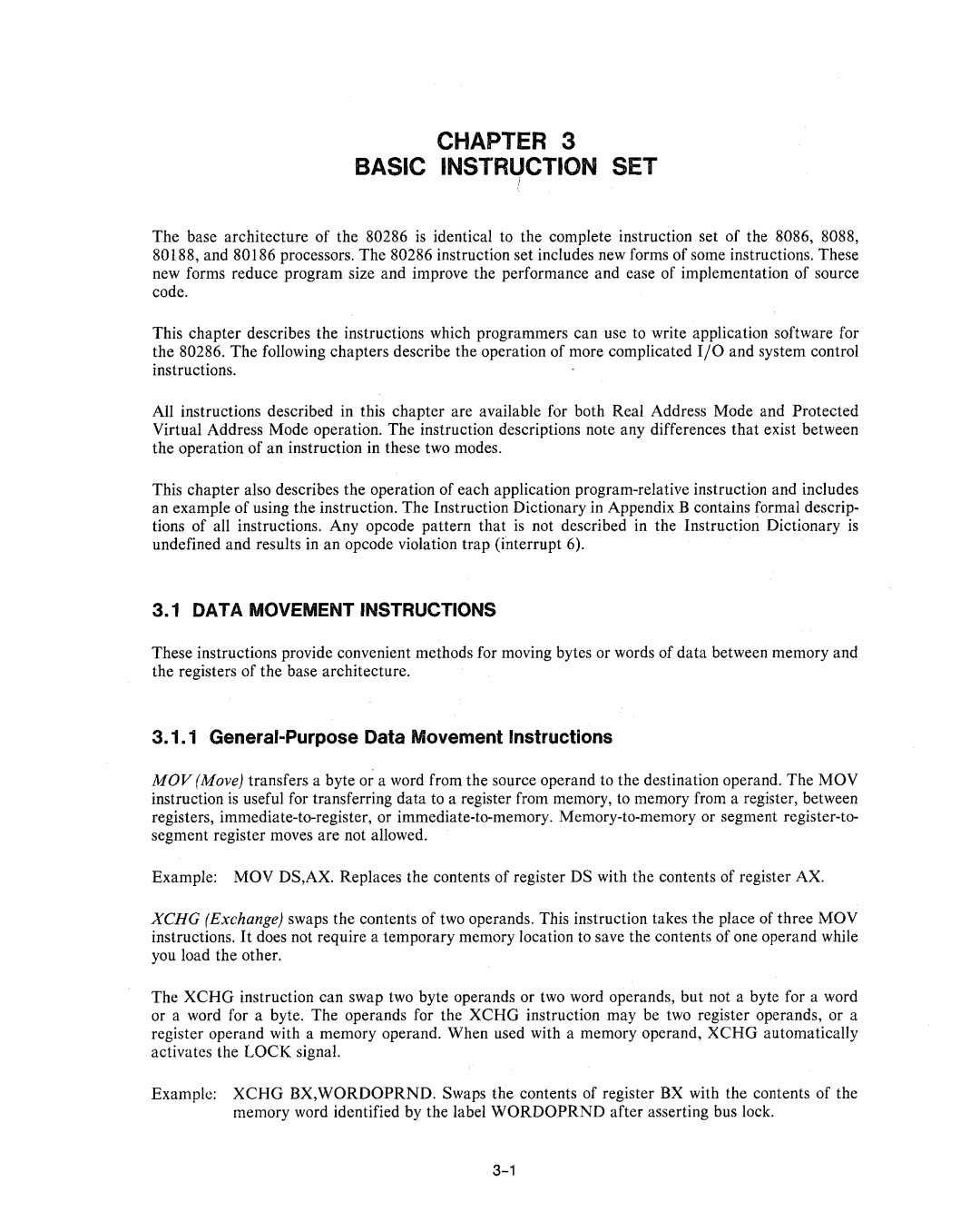
CHAPTER 3
BASIC INSTRUCTION SET
!
The base architecture of the 80286 is identical to the complete instruction set of the 8086, 8088, 80188, and 80186 processors. The 80286 instruction set includes new forms of some instructions. These new forms reduce program size and improve the performance and ease of implementation of source code.
This chapter describes the instructions which programmers can use to write application software for the 80286. The following chapters describe the operation of more complicated I/O and system control instructions.
All instructions described in this chapter are available for both Real Address Mode and Protected Virtual Address Mode operation. The instruction descriptions note any differences that exist between the operation of an instruction in these two modes.
This chapter also describes the operation of each application
3.1 DATA MOVEMENT INSTRUCTIONS
These instructions provide convenient methods for moving bytes or words of data between memory and the registers of the base architecture.
3.1.1 General-Purpose Data Movement Instructions
MOV (Move) transfers a byte or a word from the source operand to the destination operand. The MOV instruction is useful for transferring data to a register from memory, to memory from a register, between registers,
Example: MOV DS,AX. Replaces the contents of register DS with the contents of register AX.
XCHG (Exchange) swaps the contents of two operands. This instruction takes the place of three MOV instructions. It does not require a temporary memory location to save the contents of one operand while you load the other.
The XCHG instruction can swap two byte operands or two word operands, but not a byte for a word or a word for a byte. The operands for the XCHG instruction may be two register operands, or a register operand with a memory operand. When used with a memory operand, XCHG automatically activates the LOCK signal.
Examplc: XCHG BX,WORDOPRND. Swaps the contents of register BX with the contents of the
memory word identified by the label WORDOPRND after asserting bus lock.
